
Rabbit Anti-phospho-MST4 + MST3 + STK25 (Thr178 + Thr190 + Thr174)antibody
phospho-MST4+MST3+STK25(phospho T178 + T190 + T174);p-MST4 + MST3 + STK25 (phospho T178 + T190 + T174);Mammalian STE20 like protein kinase 3; Mammalian Ste20 like protein kinase 4; Mammalian sterile 20 like 4; MASK; mess1; MGC94619; MST 3; MST 4; MST; Mst
View History [Clear]
Details
Product Name phospho-MST4 + MST3 + STK25 (Thr178 + Thr190 + Thr174) Chinese Name 磷酸化丝氨酸/苏氨酸蛋白激酶MST4,MST3,STK25抗体 Alias phospho-MST4+MST3+STK25(phospho T178 + T190 + T174); p-MST4 + MST3 + STK25 (phospho T178 + T190 + T174); Mammalian STE20 like protein kinase 3; Mammalian Ste20 like protein kinase 4; Mammalian sterile 20 like 4; MASK; mess1; MGC94619; MST 3; MST 4; MST; Mst2; MST3 and SOK1 related kinase; MST3; MST3B; OTTHUMP00000018592; OTTHUMP00000018593; Protein kinase homolog serine/threonine kinase 3 (Ste20 yeast homolog); RGD1563568; RP11-111L24.5; Serine/threonine kinase 24 (STE20 homolog yeast); Serine/threonine kinase 24; Serine/threonine kinase 25; Serine/threonine protein kinase 24; Serine/threonine protein kinase MASK; Serine/threonine protein kinase MST 4; Serine/threonine protein kinase MST4; SOK1; STE20; Ste20 like; Ste20 like kinase; STE20 like kinase 3; STE20 like kinase MST 4; STE20 like kinase MST3; STE20 like kinase MST4; Ste20 yeast homolog; Ste20/oxidant stress response kinase 1; Sterile 20 (oxidant stress response kinase 1); sterile 20 like kinase 3; Sterile 20/oxidant stress-response kinase 1; STK3; Yeast Sps1/Ste20 related kinase 1; YSK1. Product Type Phosphorylated anti Research Area Cell biology Signal transduction Apoptosis Kinases and Phosphatases Immunogen Species Rabbit Clonality Polyclonal React Species Human, Mouse, Rat, (predicted: Cow, Horse, Sheep, ) Applications WB=1:500-2000 ELISA=1:5000-10000 IHC-P=1:100-500 IHC-F=1:100-500 ICC=1:100-500 IF=1:100-500 (Paraffin sections need antigen repair)
not yet tested in other applications.
optimal dilutions/concentrations should be determined by the end user.Theoretical molecular weight 48kDa Cellular localization The nucleus cytoplasmic The cell membrane Form Liquid Concentration 1mg/ml immunogen KLH conjugated synthesised phosphopeptide derived from human MST4/MST3/STK25 around the phosphorylation site of Thr178/Thr190/Thr174: RN(p-T)FV Lsotype IgG Purification affinity purified by Protein A Buffer Solution 0.01M TBS(pH7.4) with 1% BSA, 0.03% Proclin300 and 50% Glycerol. Storage Shipped at 4℃. Store at -20 °C for one year. Avoid repeated freeze/thaw cycles. Attention This product as supplied is intended for research use only, not for use in human, therapeutic or diagnostic applications. PubMed PubMed Product Detail Novel human Ste20-related kinase Mst4 is biologically active in the activation of MEK/ERK pathway and in mediating cell growth and transformation. It is pro apoptotic and is highly expressed in placenta, thymus, and peripheral blood leukocytes. Interaction with Golgi matrix protein GOLGA2 results in autophosphorylation on Thr-178, possibly as a consequence of stabilization of dimer formation. This may also be activated by C terminal cleavage. MST3 or Mammalian Sterile 20-like kinase 3 is a member of the germinal center kinase-III family. MST3 contains a conserved kinase domain at its NH(2)-terminus and a regulatory domain at its COOH-terminus. Caspase-mediated cleavage of the regulatory domain of MST3 activates its intrinsic kinase activity and leads to nuclear translocation. Expression of COOH-terminal truncated MST3 in cells results in DNA fragmentation and induction of apoptosis. It can inhibit cell migration in a fashion dependent on autophosphorylation and can regulate paxillin phosphorylation through tyrosine phosphatase PTP-PEST. Mitogen activated protein kinase cascades have been conserved throughout evolution. In mammals, these cascades allow responses to complex stimuli such as growth factors and inflammatory cytokines. In yeast, STK25 functions upstream of the MAPK cascade.
Function:
Serine/threonine-protein kinase that acts on both serine and threonine residues and promotes apoptosis in response to stress stimuli and caspase activation. Mediates oxidative-stress-induced cell death by modulating phosphorylation of JNK1-JNK2 (MAPK8 and MAPK9), p38 (MAPK11, MAPK12, MAPK13 and MAPK14) during oxidative stress. Plays a role in a staurosporine-induced caspase-independent apoptotic pathway by regulating the nuclear translocation of AIFM1 and ENDOG and the DNase activity associated with ENDOG. Phosphorylates STK38L on 'Thr-442' and stimulates its kinase activity. Regulates cellular migration with alteration of PTPN12 activity and PXN phosphorylation: phosphorylates PTPN12 and inhibits its activity and may regulate PXN phosphorylation through PTPN12. May act as a key regulator of axon regeneration in the optic nerve and radial nerve.
Subunit:
Monomer.
Subcellular Location:
STK25, MST4: Cytoplasmic, Golgi Apparatus. MST3: Cytoplasm. Nucleus. Membrane. Note=The truncated form (MST3/N) translocates to the nucleus. Co-localizes with STK38L in the membrane.
Tissue Specificity:
MST3: Isoform A is ubiquitous. Isoform B is expressed in brain with high expression in hippocampus and cerebral cortex.
Post-translational modifications:
MST3: Proteolytically processed by caspases during apoptosis. Proteolytic cleavage results in kinase activation, nuclear translocation of the truncated form (MST3/N) and the induction of apoptosis.
Isoform B is activated by phosphorylation by PKA. Oxidative stress induces phosphorylation. Activated by autophosphorylation at Thr-190 and phosphorylation at this site is essential for its function. Manganese, magnesium and cobalt-dependent autophosphorylation is mainly on threonine residues while zinc-dependent autophosphorylation is on both serine and threonine residues.
Similarity:
Belongs to the protein kinase superfamily. STE Ser/Thr protein kinase family. STE20 subfamily.
Contains 1 protein kinase domain.
SWISS:
O00506
Gene ID:
10494
Database links:Entrez Gene: 10494 Human
Entrez Gene: 51765 Human
Entrez Gene: 8428 Human
Omim: 300547 Human
Omim: 602255 Human
Omim: 604984 Human
SwissProt: O00506 Human
SwissProt: Q9P289 Human
SwissProt: Q9Y6E0 Human
Product Picture
U-87MG(Human) Cell Lysate at 30 ug
Primary: Anti-phospho-MST4 + MST3 + STK25 (Thr178 + Thr190 + Thr174) (SL10441R) at 1/500 dilution
Secondary: IRDye800CW Goat Anti-Rabbit IgG at 1/20000 dilution
Predicted band size: 48 kD
Observed band size: 39 kD
Tissue/cell: rat brain tissue; 4% Paraformaldehyde-fixed and paraffin-embedded;
Antigen retrieval: citrate buffer ( 0.01M, pH 6.0 ), Boiling bathing for 15min; Block endogenous peroxidase by 3% Hydrogen peroxide for 30min; Blocking buffer (normal goat serum,C-0005) at 37℃ for 20 min;
Incubation: Anti-phospho-MST4+MST3+STK25 (Thr178+Thr190+Thr174) Polyclonal Antibody, Unconjugated(SL10441R) 1:200, overnight at 4°C, followed by conjugation to the secondary antibody(SP-0023) and DAB(C-0010) staining
Paraformaldehyde-fixed, paraffin embedded (mouse stomach); Antigen retrieval by boiling in sodium citrate buffer (pH6.0) for 15min; Block endogenous peroxidase by 3% hydrogen peroxide for 20 minutes; Blocking buffer (normal goat serum) at 37°C for 30min; Antibody incubation with (phospho-MST4 + MST3 + STK25 (Thr178 + Thr190 + Thr174) ) Polyclonal Antibody, Unconjugated (SL10441R) at 1:200 overnight at 4°C, followed by operating according to SP Kit(Rabbit) (sp-0023) instructionsand DAB staining.Paraformaldehyde-fixed, paraffin embedded (Human stomach); Antigen retrieval by boiling in sodium citrate buffer (pH6.0) for 15min; Block endogenous peroxidase by 3% hydrogen peroxide for 20 minutes; Blocking buffer (normal goat serum) at 37°C for 30min; Antibody incubation with (phospho-MST4 + MST3 + STK25 (Thr178 + Thr190 + Thr174) ) Polyclonal Antibody, Unconjugated (SL10441R) at 1:200 overnight at 4°C, followed by operating according to SP Kit(Rabbit) (sp-0023) instructionsand DAB staining.Paraformaldehyde-fixed, paraffin embedded (rat brain); Antigen retrieval by boiling in sodium citrate buffer (pH6.0) for 15min; Block endogenous peroxidase by 3% hydrogen peroxide for 20 minutes; Blocking buffer (normal goat serum) at 37°C for 30min; Antibody incubation with (phospho-MST4 + MST3 + STK25 (Thr178 + Thr190 + Thr174) ) Polyclonal Antibody, Unconjugated (SL10441R) at 1:200 overnight at 4°C, followed by operating according to SP Kit(Rabbit) (sp-0023) instructionsand DAB staining.Paraformaldehyde-fixed, paraffin embedded (Human kidney); Antigen retrieval by boiling in sodium citrate buffer (pH6.0) for 15min; Block endogenous peroxidase by 3% hydrogen peroxide for 20 minutes; Blocking buffer (normal goat serum) at 37°C for 30min; Antibody incubation with (phospho-MST4 + MST3 + STK25 (Thr178 + Thr190 + Thr174) ) Polyclonal Antibody, Unconjugated (SL10441R) at 1:200 overnight at 4°C, followed by operating according to SP Kit(Rabbit) (sp-0023) instructionsand DAB staining.Paraformaldehyde-fixed, paraffin embedded (mouse brain); Antigen retrieval by boiling in sodium citrate buffer (pH6.0) for 15min; Block endogenous peroxidase by 3% hydrogen peroxide for 20 minutes; Blocking buffer (normal goat serum) at 37°C for 30min; Antibody incubation with (phospho-MST4 + MST3 + STK25 (Thr178 + Thr190 + Thr174) ) Polyclonal Antibody, Unconjugated (SL10441R) at 1:200 overnight at 4°C, followed by operating according to SP Kit(Rabbit) (sp-0023) instructionsand DAB staining.
Bought notes(bought amounts latest0)
No one bought this product
User Comment(Total0User Comment Num)
- No comment
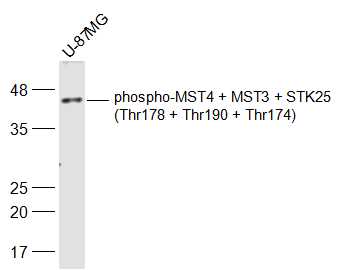

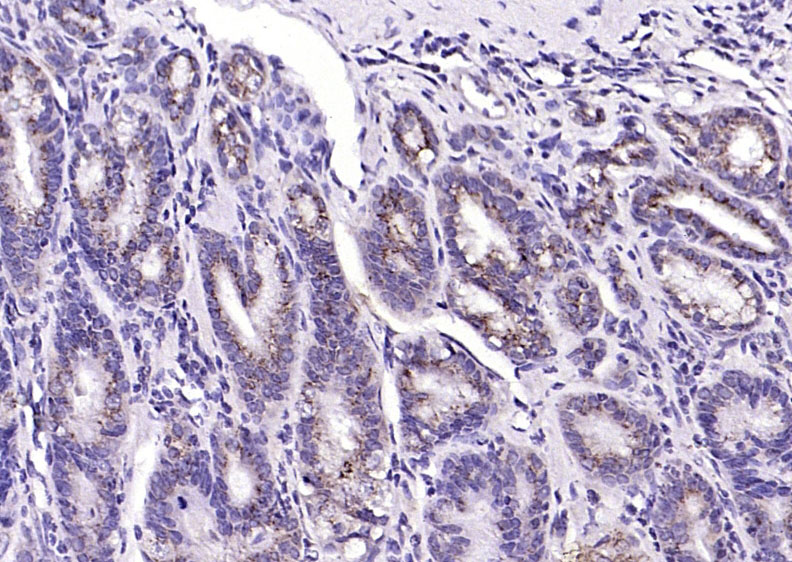
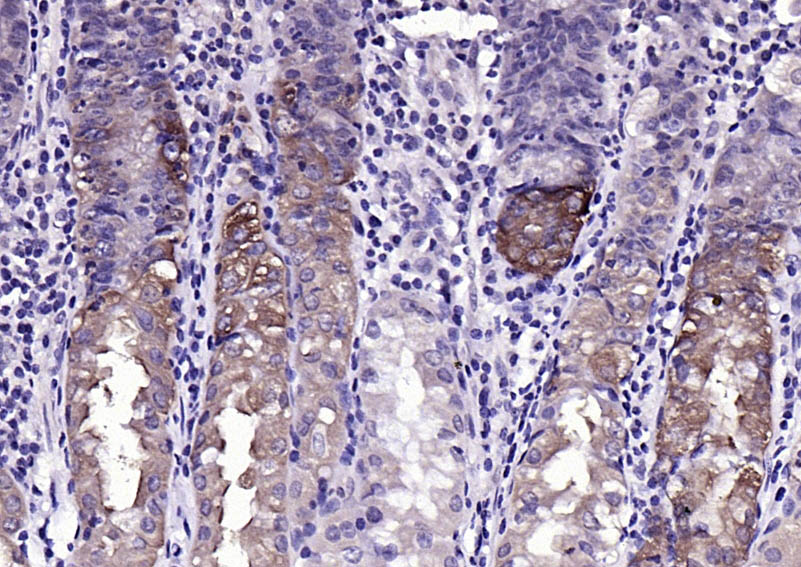
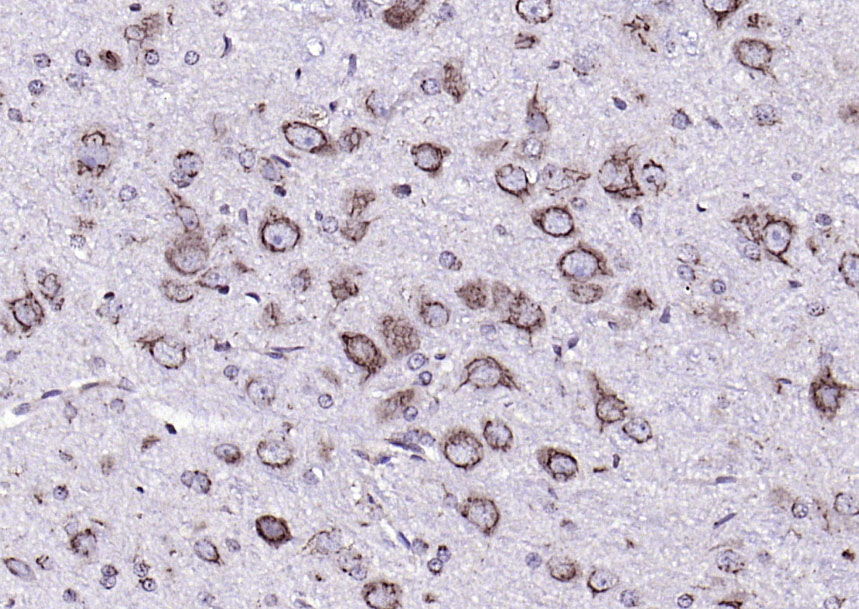
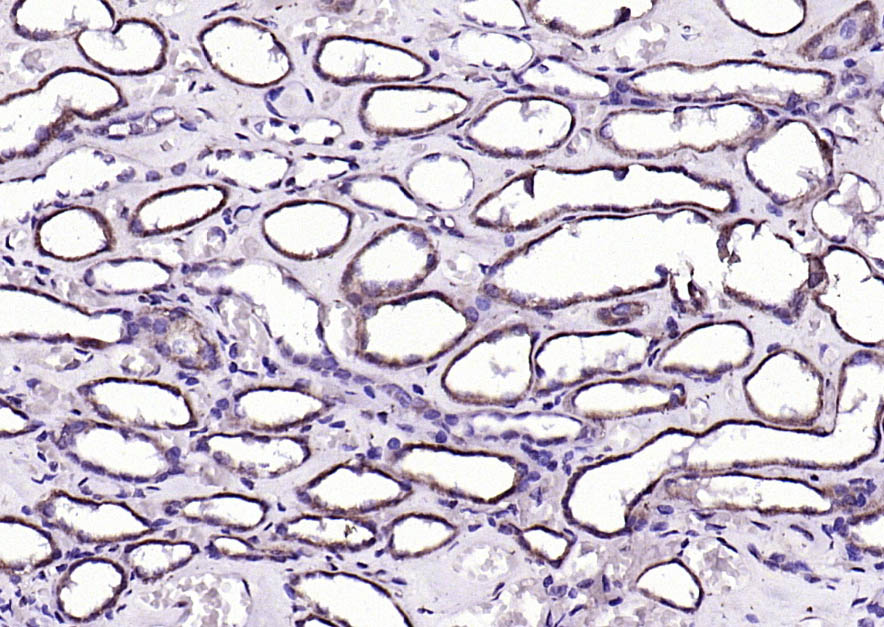
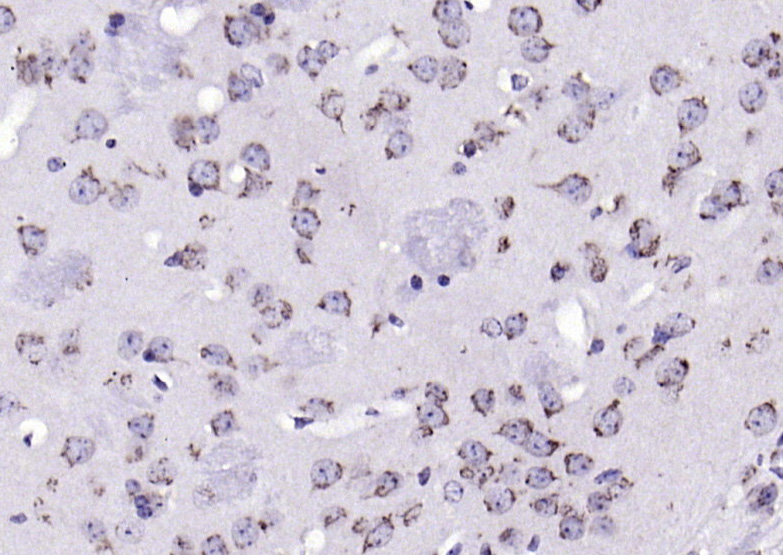


 +86 571 56623320
+86 571 56623320
 +86 18668110335
+86 18668110335

